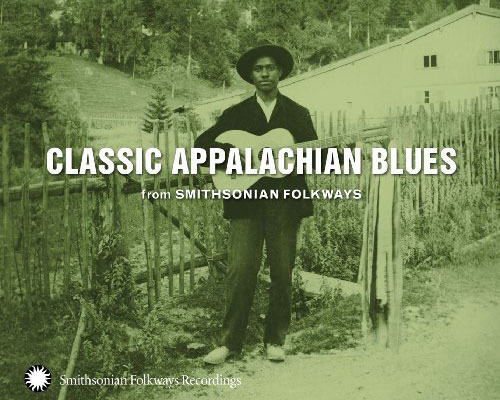
Various Artists
Classic Appalachian Blues
Smithsonian Folkways
These 21 tracks, part of Smithsonian Folkways’ compilation series, include blues greats like Archie Edwards, Pink Anderson, and Etta Baker. The collection draws exclusively from artists who learned their trade in the Southern Appalachians. Some, like Martin, Bogan & Armstrong—a black string band who toured the region on foot—and Peg Leg Sam Jackson who learned his mean harmonica from decades with an itinerant medicine show.
The recordings cover a period from 1948 to 1977; the later ones being mostly performances at the Smithsonian Festival of American Folklife, a pillar of the national folk revival, which unfolded toward the end of these artists’ lives.
According to the 36 pages of history-packed liner notes, the disc “dispels the notion that Appalachian music is limited to country performed by white men and women, and that blues is unique to black musicians of the Mississippi Delta region…The Appalachian blues tradition is far more integrated than Delta or Texas blues.” Mining and lumber industries brought people of various ethnicities to Appalachia, resulting in a unique musical permutation. It’s not entirely old-time country, folk, or deep Southern blues, but includes elements of all three.
One of my favorites, “Hoodoo Blues,” is by Martin et al., who reunited after decades apart and played the festival circuit in 1972. The melody is played slow on a fiddle, there’s mandolin and loose-and-twangy stand-up bass in the mix, and the recording catches a rowdy audience in the background. The compilation ends with a fun, danceable drinking song that Sticks McGhee recorded in 1958, topping the charts and reportedly keeping Atlantic Records from going under.
If you’re an old-time music fan, you really can’t go wrong here. And get a copy of the liner notes if you can, because half the fun is reading about who stole what riff from whom and how far their music travelled beyond the mountains they came from.












